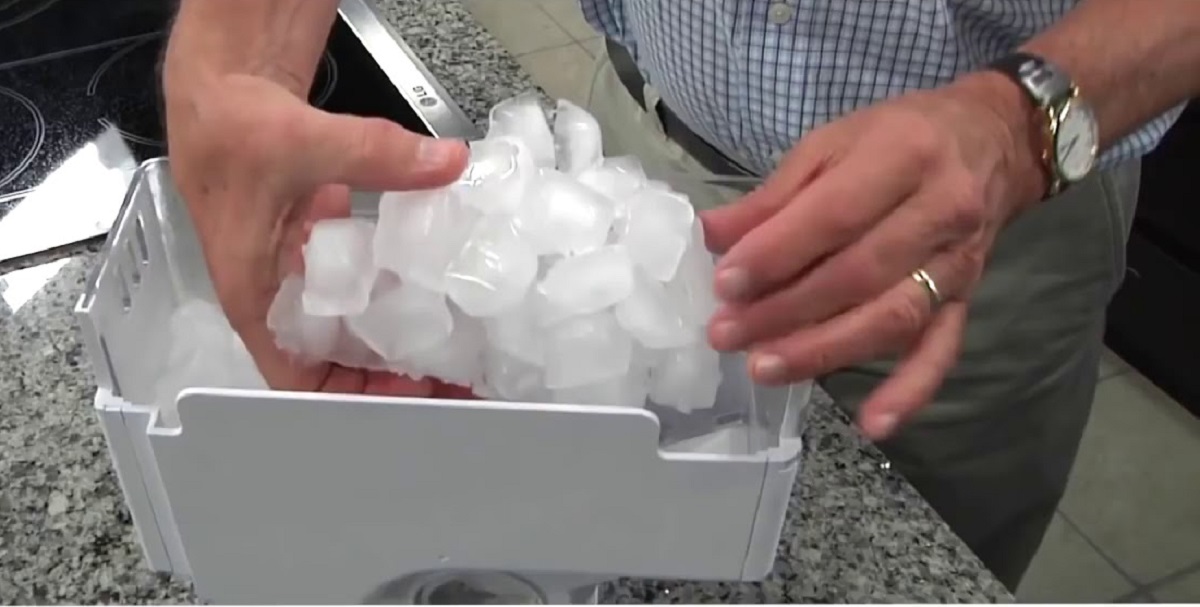

Articles
Why Is My Ice Maker Making Clumps Of Ice
Modified: May 6, 2024
Discover why your ice maker is creating clumps of ice with our informative articles. Find solutions and troubleshooting tips to fix the issue.
(Many of the links in this article redirect to a specific reviewed product. Your purchase of these products through affiliate links helps to generate commission for Storables.com, at no extra cost. Learn more)
Introduction
Welcome to the world of ice makers, where the magic of turning water into ice happens at the push of a button. Having an ice maker is a convenient way to keep your beverages chilled and ready to go, whether you’re hosting a summer barbecue or simply enjoying a refreshing drink at home. However, it can be quite frustrating when your ice maker starts producing clumps of ice instead of individual cubes.
Clumping ice can not only be an inconvenience but also a sign that something is not quite right with your ice maker. But fear not! In this article, we will dive into the common causes of ice clumping and how you can prevent it from happening in the future.
Key Takeaways:
- Say goodbye to clumpy ice! Reduce humidity, optimize temperature, avoid overstuffing, and maintain your ice maker for perfectly formed, individual ice cubes every time.
- Keep your cool with clump-free ice! Combat high humidity, maintain optimal temperature, declutter your freezer, and perform regular maintenance to enjoy smooth ice-making without the frustration of clumping.
Read more: Why Is My Ice Maker Not Making
Understanding the Ice Maker
Before we explore the reasons behind ice clumping, let’s take a moment to understand how an ice maker works. In most models, the ice maker consists of a water supply, a freezing component, and a harvesting mechanism.
The process begins with a water inlet valve, which allows water to enter the ice maker. The water then flows into a mold or tray, where it is frozen into individual ice cubes. Once frozen, the harvesting mechanism releases the ice cubes into a storage bin, ready to be used at your convenience.
Common Causes of Ice Clumping
Now that we have a basic understanding of how an ice maker works, let’s explore some of the common causes of ice clumping:
- High Humidity: One of the most common causes of ice clumping is high humidity in the freezer. When the freezer is not adequately sealed or has high humidity levels, the moisture in the air can cause the ice cubes to stick together.
- Improper Temperature Settings: If the freezer temperature is set too low, the ice cubes may freeze together, resulting in clumps. Similarly, if the temperature is too high, the ice cubes may partially melt, leading to clumping when they refreeze.
- Freezer Overcrowding: Overfilling your freezer can restrict the airflow, causing uneven freezing and clumping of the ice cubes.
- Faulty Ice Maker Assembly: Sometimes, the ice maker assembly itself may be faulty, leading to improper ice cube formation and subsequent clumping.
- Water Inlet Valve Issues: If the water inlet valve is not functioning properly, it may dispense excessive water into the ice maker, causing the cubes to freeze together.
- Clogged Water Filter: A clogged or dirty water filter can impact the quality of the ice cubes, potentially leading to clumping.
- Faulty Ice Dispenser Mechanism: If you have an ice dispenser in your freezer, a malfunctioning mechanism can cause the cubes to clump together during the dispensing process.
Key Takeaways:
- Say goodbye to clumpy ice! Reduce humidity, optimize temperature, avoid overstuffing, and maintain your ice maker for perfectly formed, individual ice cubes every time.
- Keep your cool with clump-free ice! Combat high humidity, maintain optimal temperature, declutter your freezer, and perform regular maintenance to enjoy smooth ice-making without the frustration of clumping.
Read more: Why Is My Ice Maker Not Making
Understanding the Ice Maker
Before we delve into the common causes of ice clumping, it’s essential to understand how an ice maker works. Ice makers are remarkable appliances that allow you to enjoy a continuous supply of ice at your convenience. Most ice makers typically consist of three main components: the water supply, the freezing component, and the harvesting mechanism.
The process of creating ice begins with a water supply, which is usually connected to your home’s water line. When you initiate the ice-making process, a water inlet valve opens, allowing water to flow into the ice maker. The water is then directed into a small tray or mold, which is designed to hold individual ice cubes. The tray is carefully positioned in a freezing chamber.
Inside the freezing chamber, a cooling element, usually in the form of metallic coils, extracts the heat from the water, causing it to freeze into ice cubes. The freezing process usually takes around 20-30 minutes, depending on the temperature settings and the capacity of the ice maker.
Once the ice cubes are frozen, the ice maker goes into the harvesting phase. This is when the harvesting mechanism comes into play, releasing the ice cubes from the tray or mold. The harvested ice cubes are then directed into a storage bin, ready for use whenever you need them.
Many ice makers also feature additional functionalities, such as an ice dispenser or an ice crusher, allowing you to dispense crushed ice or cubed ice directly into your glass with ease.
It’s important to note that different ice makers may have variations in terms of design and mechanism. Some ice makers use a rotating arm to release the ice cubes, while others employ a heat source to loosen the ice before releasing it. Understanding the specific workings of your ice maker can help troubleshoot any issues and ensure its optimal performance.
Now that we have a better understanding of how an ice maker operates, let’s explore some of the common reasons why ice can clump together instead of remaining as individual cubes. By identifying these causes, we can take appropriate measures to prevent ice clumping and enjoy a smooth ice-making experience.
Common Causes of Ice Clumping
Ice clumping can be a frustrating issue, but luckily, it is often caused by a few common factors. Understanding these causes can help you troubleshoot and prevent the problem. Here are some of the most frequent reasons for ice clumping:
- High Humidity: One of the primary culprits behind ice clumping is high humidity in the freezer. When the freezer isn’t adequately sealed or has high levels of humidity, the moisture in the air can come into contact with the ice cubes. This causes the ice cubes to partially melt and refreeze together, forming clumps.
- Improper Temperature Settings: Another factor that can lead to ice clumping is improper temperature settings in the freezer. If the temperature is set too low, the ice cubes may freeze together, creating clumps. On the other hand, if the temperature is too high, the ice cubes can partially melt and refreeze, resulting in clumping. It’s crucial to ensure that the freezer temperature is set within the manufacturer’s recommended range.
- Freezer Overcrowding: Overfilling your freezer with food items can restrict proper airflow within the freezer compartment. Poor airflow hampers the freezing process and can cause the ice cubes to freeze unevenly and stick together, leading to clumps. To prevent this, make sure there is sufficient space for proper air circulation in the freezer.
- Faulty Ice Maker Assembly: Sometimes, the issue may lie with the ice maker assembly itself. A malfunctioning assembly can result in improper ice cube formation, causing the cubes to freeze together and form clumps. If you suspect a problem with the ice maker assembly, it may be necessary to call a professional for repair or replacement.
- Water Inlet Valve Issues: The water inlet valve is responsible for controlling the water flow into the ice maker. If the valve is faulty or stuck open, it can dispense too much water into the ice maker, leading to oversized ice cubes that freeze together. In this case, inspecting and repairing or replacing the water inlet valve can resolve the issue.
- Clogged Water Filter: A clogged or dirty water filter can affect the quality and flow of water going into the ice maker. This can impact the formation of individual ice cubes and cause them to stick together. Regularly replacing or cleaning the water filter can help prevent this problem.
- Faulty Ice Dispenser Mechanism: If your freezer is equipped with an ice dispenser, a faulty or malfunctioning dispenser mechanism can contribute to ice clumping. When the dispenser mechanism doesn’t operate smoothly, it can cause the ice cubes to crush and stick together during the dispensing process. Inspecting and repairing the dispenser mechanism can help alleviate this issue.
Identifying the specific cause of ice clumping in your ice maker can help you take appropriate measures to resolve the issue. In the next section, we will discuss some preventive steps you can take to minimize ice clumping and keep your ice maker running smoothly.
Read more: Why Is My Igloo Ice Maker Not Making Ice
High Humidity
When it comes to ice clumping, high humidity in the freezer is one of the most common culprits. High humidity occurs when there is excessive moisture present in the air within the freezer. This moisture can come into contact with the ice cubes and cause them to stick together, forming clumps instead of maintaining their individual shape.
Several factors can contribute to high humidity in the freezer. One common cause is improper sealing of the freezer door. If the door doesn’t seal properly, warm air from outside can seep into the freezer, leading to increased humidity. It is crucial to ensure that the freezer door is tightly sealed to prevent air leakage. Inspecting the door gasket and replacing it if necessary can help maintain a proper seal.
In addition to a faulty door seal, opening the freezer frequently, especially for extended periods, can also introduce warm and humid air. This can increase the humidity levels inside the freezer, potentially leading to ice clumping. To minimize the impact of frequent door openings, try to retrieve everything you need in one go and avoid leaving the freezer door open for prolonged periods.
To combat high humidity in the freezer, consider using a dehumidifier specifically designed for refrigerators and freezers. These dehumidifiers work by absorbing excess moisture in the air, helping to maintain optimal humidity levels and prevent ice clumping. Placing moisture-absorbing packets or containers, such as silica gel, in the freezer can also help reduce humidity.
Another effective way to mitigate high humidity is by organizing the contents of your freezer properly. Avoid placing warm or uncovered food items directly into the freezer, as they can release moisture into the air and increase humidity levels. Allow hot food to cool down before placing it in the freezer, and always ensure that food is properly covered or sealed with airtight containers or freezer bags.
Regularly defrosting your freezer can also help reduce humidity. Over time, ice and frost can accumulate within the freezer, contributing to increased humidity levels. When the ice and frost are allowed to build up, they can melt and refreeze, causing ice clumping. By defrosting your freezer regularly, you can remove any excess ice and frost, maintaining better control over humidity levels and preventing clumping.
By taking proactive steps to minimize high humidity in the freezer, you can significantly reduce the occurrence of ice clumping. Maintaining a proper seal on the freezer door, minimizing frequent openings, using dehumidifiers or moisture-absorbing packets, organizing the contents of the freezer, and regular defrosting are all effective strategies for combating high humidity and ensuring that your ice cubes remain separate and clump-free.
Improper Temperature Settings
When it comes to preventing ice clumping in your ice maker, maintaining proper temperature settings in the freezer is crucial. Both excessively low and high temperatures can contribute to ice cubes freezing together and forming clumps.
If the temperature in your freezer is set too low, the ice cubes may freeze together due to prolonged exposure to extremely cold conditions. This can occur when the temperature is below the optimal range for ice cube formation. Additionally, very low temperatures can cause the ice cubes to freeze too quickly, trapping excess water in between them and leading to clumping. It is important to check the recommended temperature range for your specific ice maker model and adjust the setting accordingly.
On the other hand, if the temperature in the freezer is set too high, the ice cubes may partially melt and refreeze, resulting in clumping. This can occur when the temperature is above the ideal freezing point for water. When the partially melted ice cubes come into contact with each other or the freezing tray, they can stick together, forming clumps. Therefore, it is crucial to maintain the correct freezer temperature to prevent ice clumping.
To optimize temperature settings in your freezer, start by checking the manufacturer’s recommendations for the ideal freezer temperature. The recommended range often falls around 0°F (-18°C) to 5°F (-15°C). Use a thermometer designed for freezers to monitor the temperature accurately. If the temperature deviates from the recommended range, adjust the freezer’s temperature control accordingly.
It is important to note that opening the freezer frequently or leaving the door open for extended periods can also impact the internal temperature. Each time the door is opened, warm air from the surrounding environment enters the freezer, which can cause fluctuations in temperature. Minimizing door openings and ensuring the door is tightly sealed can help maintain a consistent and appropriate temperature, reducing the likelihood of ice clumping.
Remember to periodically check the freezer’s temperature to ensure it remains within the desired range. This is especially important during the summer months or in areas with high ambient temperatures, as the heat can affect the internal temperature of the freezer. If you notice any significant variations, make necessary adjustments to maintain optimal conditions for ice cube formation.
By maintaining proper temperature settings in your freezer, you can prevent ice cubes from freezing together and forming clumps. Regularly monitoring the temperature, minimizing door openings, and adjusting the temperature control accordingly will help ensure that your ice maker produces individual, high-quality ice cubes every time.
Freezer Overcrowding
Overcrowding your freezer can contribute to ice clumping and affect the overall performance of your ice maker. When the freezer is packed with too many items, it can restrict proper airflow, leading to uneven freezing and potential ice clumping.
Poor airflow in the freezer can disrupt the freezing process and cause variations in temperature throughout the compartment. This can result in some areas being colder than others, leading to uneven freezing of the ice cubes. When the ice cubes freeze unevenly, they can stick together and form clumps.
To prevent overcrowding, start by organizing the contents of your freezer. Group similar items together and neatly arrange them to make efficient use of space. Avoid placing large or bulky items directly in front of the ice maker or near the vents, as this can block airflow and hinder proper freezing.
Additionally, make sure to leave enough space between items to allow for proper air circulation. This will help maintain consistent temperatures throughout the freezer and reduce the likelihood of ice clumping. Be mindful of efficiently utilizing the available space and avoid overstuffing the freezer beyond its capacity.
If your freezer is consistently overcrowded, you may consider investing in additional freezer space or utilizing alternative storage options, such as a standalone freezer or a refrigerator with a separate freezer compartment. This can help alleviate overcrowding and provide sufficient space for proper airflow and freezing.
Regularly decluttering and removing expired or unnecessary items from your freezer can also contribute to maintaining optimal airflow. This will ensure that cold air circulates freely, preventing variations in temperature and promoting uniform freezing of the ice cubes.
It’s important to note that overcrowding can also impact other aspects of your freezer’s performance. When the freezer is packed with items, it may require more energy to maintain the desired temperature, leading to increased energy consumption. Additionally, an overcrowded freezer can make it difficult to access items quickly and efficiently.
By avoiding overcrowding and maintaining proper airflow in your freezer, you not only prevent ice clumping but also optimize the overall functionality of your ice maker. Take the time to organize and declutter your freezer regularly to ensure that your ice cubes freeze individually and remain clump-free.
Faulty Ice Maker Assembly
In some cases, the issue of ice clumping may be attributed to a faulty ice maker assembly. The assembly includes various components such as the ice mold or tray, the harvesting mechanism, and the release mechanism. When any of these components experience a malfunction, it can disrupt the proper formation and release of ice cubes, leading to clumping.
One possible problem with the ice maker assembly is a misalignment of the ice mold or tray. If the mold is not positioned correctly, it can lead to improper ice cube formation, causing the cubes to freeze together and form clumps. Inspecting the alignment of the ice mold and adjusting it if necessary can help resolve this issue.
Another potential issue is a malfunctioning harvesting mechanism. The harvesting mechanism is responsible for releasing the ice cubes from the mold or tray and transferring them to the storage bin. If the mechanism does not work properly, it can cause the ice cubes to stick together during the harvesting process, resulting in clumping. In such cases, repairing or replacing the faulty harvesting mechanism may be necessary.
The release mechanism, which is responsible for dispensing the ice cubes into a glass or container, can also contribute to clumping if it malfunctions. If the release mechanism does not operate smoothly, it can crush the ice cubes and cause them to stick together, leading to clumping during dispensing. Regular maintenance and lubrication of the release mechanism can help prevent this issue.
If you suspect a faulty ice maker assembly is the cause of the clumping, it is advisable to consult a professional technician or contact the manufacturer for assistance. They can inspect the assembly and recommend the appropriate repairs or replacements. It is important not to attempt to disassemble or repair the ice maker assembly yourself unless you have the necessary knowledge and expertise.
Regular maintenance of the ice maker assembly is also essential to prevent potential issues. This includes cleaning the ice mold or tray, ensuring proper alignment, and lubricating any moving parts as recommended by the manufacturer. By keeping the ice maker assembly in good condition, you can minimize the chances of ice clumping and ensure smooth operation of your ice maker.
Addressing any faults or malfunctions in the ice maker assembly can help eliminate the issue of ice clumping and ensure the production of individual, separate ice cubes. Proper maintenance and professional assistance, if needed, are key to resolving assembly-related problems and maintaining the optimal functioning of your ice maker.
Read more: Why Is My Samsung Ice Maker Not Making Ice
Water Inlet Valve Issues
A faulty water inlet valve can be a significant contributing factor to ice clumping in your ice maker. The water inlet valve is responsible for controlling the flow of water into the ice maker. If the valve malfunctions or fails to operate correctly, it can dispense an excessive amount of water into the ice maker, leading to oversized ice cubes that freeze together and form clumps.
There are a few potential issues that can arise with the water inlet valve. One common problem is a valve that remains stuck in the open position, continuously allowing water to flow into the ice maker. This constant flow can result in an excess amount of water, causing the ice cubes to freeze together and clump.
Conversely, a valve that is stuck in the closed position or does not open fully can prevent enough water from entering the ice maker. Insufficient water can lead to underfilled ice molds or trays, resulting in smaller ice cubes that may melt and refreeze together, forming clumps.
If you suspect that your ice maker is experiencing water inlet valve issues, there are a few steps you can take to troubleshoot the problem. Start by ensuring that the water supply to the ice maker is connected properly and the valve is turned on. If the water supply seems fine, but the ice clumping persists, it may be necessary to inspect and replace the water inlet valve.
Replacing the water inlet valve can be a complicated task, and it is recommended to seek professional assistance or contact the manufacturer for guidance. A professional technician can evaluate the valve’s functioning, identify any faults, and install a new valve if necessary.
Regular maintenance of the water inlet valve is also crucial for preventing issues. Cleaning or descaling the valve periodically can help prevent mineral deposits or debris buildup that may affect its functionality. Follow the manufacturer’s guidelines for proper cleaning and maintenance to ensure optimal performance.
By addressing any water inlet valve issues promptly, you can restore proper water flow to the ice maker, prevent excessive or insufficient water supply, and ultimately minimize the occurrence of ice clumping. It is important to have regular maintenance checks on the water inlet valve to ensure the smooth operation of your ice maker.
Clogged Water Filter
A clogged water filter in your ice maker can contribute to ice clumping and affect the quality of ice cubes produced. Water filters are designed to remove impurities and contaminants from the water supply, ensuring that the ice cubes are clean and clear. However, over time, these filters can become clogged with sediment, minerals, and debris, hindering proper water flow and leading to issues such as ice clumping.
When the water filter is clogged, it restricts the flow of water into the ice maker. This can result in inadequate water supply to the ice molds or trays, causing the cubes to form slowly or in irregular shapes. Consequently, when the misshapen or partially formed ice cubes freeze, they can stick together and form clumps.
To prevent ice clumping due to a clogged water filter, it is essential to regularly check and replace the filter as recommended by the manufacturer. The frequency at which the filter should be replaced depends on factors such as the specific model of the ice maker, the water quality in your area, and the manufacturer’s guidelines.
To determine if the water filter is clogged, inspect it visually for any visible signs of blockage or discoloration. Some filters also have an indicator that can show when they need to be replaced. If you notice a significant decrease in water flow or suspect that the filter is clogged, it is best to err on the side of caution and replace it.
Replacing the water filter is a relatively simple process and can usually be done without professional assistance. Refer to the instruction manual or guidelines provided with your ice maker for specific instructions on replacing the filter. Make sure to use a compatible filter and follow the recommended procedure to ensure proper installation.
In addition to regular filter replacement, it is important to keep the filter housing clean. The filter housing can accumulate sediment and debris, which can affect the water flow even if the filter itself is replaced. Cleaning the housing periodically with a mild detergent and water can help maintain optimal water flow and prevent clogs.
By regularly replacing the water filter and keeping the filter housing clean, you can ensure proper water flow to the ice maker, minimize the risk of ice clumping, and enjoy high-quality, individual ice cubes. Pay attention to the recommended maintenance schedule provided by the manufacturer to maintain the efficiency and performance of your ice maker.
Check the water supply line for any kinks or blockages, as this can cause uneven water flow and lead to clumping. Also, make sure the ice maker is level to ensure even distribution of water.
Faulty Ice Dispenser Mechanism
If your freezer is equipped with an ice dispenser, a faulty or malfunctioning dispenser mechanism can contribute to ice clumping and hinder the smooth dispensing of ice cubes. The ice dispenser mechanism is responsible for releasing the ice cubes from the storage bin and delivering them into a glass or container.
One possible issue with the ice dispenser mechanism is a misalignment or obstruction in the dispenser chute. The dispenser chute is the passage through which the ice cubes travel from the storage bin to the dispensing area. If the chute is misaligned or blocked by ice buildup or debris, it can cause the cubes to be crushed or stick together during the dispensing process, leading to clumping.
Another common problem is a malfunctioning ice crusher or crusher blades within the dispenser mechanism. When the ice crusher fails to operate properly, it can crush the ice cubes excessively, causing them to clump together and making it difficult to dispense individual cubes. In some cases, the crusher blades may become dull or worn out, further contributing to ice clumping.
To address these issues, it is important to inspect the ice dispenser mechanism and the dispenser chute regularly. Start by cleaning the dispenser chute to remove any ice buildup or debris. Use a soft cloth or brush to gently clean the inside of the chute, ensuring that it is clear and unobstructed. If necessary, melt away any ice buildup with warm water or a hairdryer set to a low heat setting.
If the ice cubes continue to clump despite a clean chute, it may be necessary to examine the ice crusher mechanism. Refer to the manufacturer’s instructions for disassembling and inspecting the dispenser mechanism. Look for any signs of damage or wear on the crusher blades, and consider replacing them if necessary. Ensure that all components are properly aligned and functioning smoothly to prevent further clumping issues.
If you are unsure about disassembling or repairing the ice dispenser mechanism yourself, it is advisable to consult a professional technician or contact the manufacturer for assistance. They can provide expert guidance and ensure that the dispenser mechanism is repaired or replaced correctly.
Regular maintenance and cleaning of the ice dispenser mechanism are essential to prevent ice clumping. Clearing any obstructions, ensuring the dispenser chute is clean, and checking the crusher blades for damage will help maintain the smooth operation of the dispenser and prevent the formation of clumped ice cubes during dispensing.
By addressing any faults or malfunctions in the ice dispenser mechanism, you can enjoy the convenience of individual ice cubes dispensed smoothly and avoid the frustration of clumping. Regular maintenance and prompt repairs are key to ensuring the optimal performance of your ice dispenser.
Preventing Ice Clumping
Now that we’ve explored the common causes of ice clumping, let’s discuss some preventive measures you can take to minimize or eliminate this issue. By implementing these strategies, you can ensure that your ice maker consistently produces individual, separate ice cubes without clumping.
Read more: Why Is My Ice Maker Making Ice So Slow
1. Reduce Humidity in the Freezer
One of the most effective ways to prevent ice clumping is to reduce humidity levels in the freezer. Here are a few tips:
- Check the freezer door seal and ensure it is tightly sealed to prevent warm air from entering
- Minimize frequent and prolonged openings of the freezer door
- Consider using a dehumidifier designed for refrigerators and freezers
- Organize the freezer contents to allow for proper airflow
- Regularly defrost the freezer to remove excess ice buildup and maintain optimal humidity levels
2. Optimize Temperature Settings
Maintaining proper temperature settings in the freezer is crucial for preventing ice clumping. Follow these guidelines:
- Keep the freezer temperature within the recommended range (usually around 0°F to 5°F or -18°C to -15°C)
- Minimize frequent door openings to prevent temperature fluctuations
- Regularly monitor the freezer temperature and adjust the temperature control as needed
- Consider using a freezer thermometer to ensure accurate temperature readings
3. Avoid Overstuffing the Freezer
Overcrowding the freezer can restrict proper airflow and contribute to ice clumping. Follow these tips:
- Organize freezer contents efficiently, ensuring there is space for proper air circulation
- Avoid placing warm or uncovered food items directly into the freezer
- Allow hot food to cool down before placing it in the freezer
- Regularly declutter and remove expired or unnecessary items from the freezer
4. Regular Maintenance and Cleaning
Performing regular maintenance and cleaning tasks will help keep your ice maker functioning optimally. Consider the following:
- Clean the ice maker’s interior, ice mold or tray, and water supply components regularly
- Inspect and clean the water inlet valve to ensure proper water flow
- Replace the water filter as recommended by the manufacturer
- Check and clean the ice dispenser mechanism and dispenser chute to prevent obstructions
- Follow the manufacturer’s guidelines for maintenance and cleaning tasks
By implementing these preventive measures, you can enjoy a consistently functioning ice maker that produces separate, high-quality ice cubes without the frustration of clumping. Remember to consult your specific ice maker’s manual for any manufacturer-specific recommendations or guidelines.
Read more: Why Is My Ice Maker Only Making Crushed Ice
Reduce Humidity in the Freezer
Reducing humidity in the freezer is crucial to prevent ice clumping. Excessive moisture in the air can cause ice cubes to stick together, forming clumps instead of remaining separate. Here are some effective strategies to minimize humidity in the freezer:
- Check the Freezer Door Seal: Ensure that the freezer door seal is intact and properly sealed. A damaged or loose seal can allow warm air from outside to enter the freezer, which increases humidity levels. If you notice any gaps or damage, consider replacing the door seal to maintain a tight seal.
- Minimize Frequent Freezer Door Openings: Every time you open the freezer door, warm air from the surrounding environment enters, increasing humidity levels. Minimize the number and duration of door openings to keep humidity in check. Retrieve everything you need in one go and avoid leaving the freezer door open for longer periods.
- Use a Dehumidifier: Consider using a dehumidifier specifically designed for refrigerators and freezers. These devices absorb excess moisture in the air, helping to maintain optimal humidity levels. Place the dehumidifier in the freezer according to the manufacturer’s instructions and regularly empty it to remove the collected moisture.
- Organize Freezer Contents: Properly organizing the contents of your freezer can promote better airflow and reduce humidity. Ensure that there is sufficient space between items for air circulation. Avoid overcrowding the freezer, as it can restrict airflow and lead to uneven cooling and increased humidity levels.
- Regularly Defrost the Freezer: Ice and frost buildup inside the freezer can contribute to higher humidity levels. Regularly defrosting the freezer helps remove excess moisture and prevent ice clumping. Follow the manufacturer’s instructions for defrosting your specific freezer model, and use a towel or tray to collect melted ice and water.
By implementing these techniques, you can create a low-humidity environment in your freezer, reducing the likelihood of ice clumping. Keeping humidity levels under control ensures that your ice cubes freeze individually and remain separated, ready to be used whenever you need them. Regular maintenance and care will help maintain optimal conditions for ice production and enhance your overall freezer performance.
Optimize Temperature Settings
Maintaining proper temperature settings in the freezer is essential for preventing ice clumping and ensuring the production of individual ice cubes. Here are some strategies to optimize temperature settings and minimize the chances of ice clumping:
- Follow Manufacturer’s Recommendations: Consult the manufacturer’s guidelines or user manual for your specific freezer model to determine the recommended temperature range. This range is usually between 0°F and 5°F (-18°C and -15°C). Following these recommendations ensures that the freezer is operating at the ideal temperature for ice cube formation.
- Minimize Temperature Fluctuations: Fluctuations in temperature can affect the freezing process and contribute to ice clumping. To minimize temperature fluctuations, avoid frequently opening the freezer door for extended periods. When the door is opened, warm air enters the freezer, leading to temperature changes. Retrieve items from the freezer efficiently, and close the door promptly after use to maintain a consistent temperature.
- Monitor the Freezer Temperature: Regularly check the freezer temperature to ensure it remains within the recommended range. You can use a freezer thermometer to accurately measure and monitor the temperature. If you notice any significant deviations from the recommended range, adjust the temperature settings accordingly using the freezer’s temperature control panel.
- Consider External Factors: External factors like ambient room temperature can influence the internal temperature of the freezer. In hot climates or during summer months, the room temperature might rise, impacting the freezer’s performance. Keep the freezer in a cool area away from direct sunlight or other heat sources to help maintain the desired temperature.
- Ensure Proper Air Circulation: Adequate air circulation within the freezer is crucial for maintaining consistent temperatures. Avoid overfilling the freezer, as it can restrict airflow and lead to uneven cooling. Arrange the items in a way that allows the cold air to circulate freely. Leave some space between items to encourage proper airflow and ensure even freezing of the ice cubes.
By optimizing temperature settings and minimizing fluctuations in the freezer, you can prevent ice clumping and ensure the production of individual ice cubes. Maintaining a consistent and appropriate temperature within the freezer is key to achieving high-quality ice and a smoothly functioning ice maker.
Avoid Overstuffing the Freezer
Overstuffing your freezer can hinder proper airflow and contribute to ice clumping. It’s important to organize the contents of your freezer efficiently to allow for adequate circulation and prevent clumping. Here are some tips to avoid overcrowding and promote optimal performance:
- Group and Organize: Arrange similar items together and use storage containers or bins to keep everything organized. Grouping similar items makes it easier to locate and access what you need without causing excessive disturbance to the other items in the freezer.
- Create Space: Leave some space between items to allow the cold air to circulate freely. This promotes uniform cooling and prevents the formation of hotspots. Avoid placing items directly against the walls of the freezer as it can disrupt proper airflow.
- Avoid Overfilling: Resist the temptation to overfill the freezer beyond its recommended capacity. Overstuffing can restrict airflow and result in uneven cooling. Be mindful of the freezer’s capacity and do not exceed it to maintain optimal performance.
- Freeze Items Before Storing: When storing food items in the freezer, it’s important to freeze them individually before placing them in containers or bags. Freezing items separately prevents them from sticking together, making it easier to retrieve individual portions without causing clumping.
- Regularly Declutter: Periodically review and declutter the contents of your freezer. Remove any expired or unused items to create more space and improve airflow. Decluttering also helps you keep track of the items in your freezer, reducing the risk of forgetting about certain foods and letting them go to waste.
By avoiding overstuffing and organizing the contents of your freezer properly, you can ensure proper airflow and minimize the risk of ice clumping. Adequate air circulation allows for more even cooling, preventing temperature variations that can lead to clumping. Taking the time to arrange and maintain the items in your freezer will result in a more efficient and reliable ice maker.
Regular Maintenance and Cleaning
Regular maintenance and cleaning of your ice maker and freezer are vital to prevent ice clumping and ensure optimal performance. Here are some important maintenance tasks to incorporate into your routine:
- Clean the Ice Maker: Periodically clean the ice maker, including the ice mold or tray, to remove any buildup or residue that can affect ice production. Follow the manufacturer’s instructions for cleaning, which often involve using a mild cleaner or a mixture of water and vinegar. Ensure that all surfaces are thoroughly rinsed and dried before reassembling the ice maker.
- Inspect and Clean the Water Inlet Valve: The water inlet valve supplies water to the ice maker. Over time, it can accumulate mineral deposits or debris, potentially affecting water flow and leading to ice clumping. Inspect the water inlet valve regularly and clean it if necessary. Refer to the manufacturer’s guidelines for proper cleaning methods, or consult a professional technician if you’re unsure.
- Replace the Water Filter: If your ice maker has a water filter, it requires regular replacement. The water filter helps remove impurities from the water, ensuring the production of clean and clear ice cubes. Follow the manufacturer’s recommendations for the frequency of filter replacement to maintain proper water filtration and prevent clogs that can lead to clumping.
- Clean the Freezer Interior: Regularly clean the interior of the freezer to remove any spills, crumbs, or debris. A dirty freezer can negatively impact the overall performance of the ice maker and contribute to ice clumping. Use a mild detergent and warm water to wipe down the interior surfaces, including the walls, shelves, and drawers. Remember to dry thoroughly before restocking the freezer.
- Inspect and Clean the Ice Dispenser Mechanism: If your freezer is equipped with an ice dispenser, regularly inspect and clean the dispenser mechanism to prevent obstructions. Ice buildup or debris can hinder the smooth flow of ice cubes and lead to clumping during dispensing. Follow the manufacturer’s instructions for proper cleaning and maintenance of the ice dispenser mechanism.
By incorporating these regular maintenance tasks into your routine, you can ensure that your ice maker and freezer are in optimal condition to prevent ice clumping. A clean and well-maintained ice maker and freezer facilitate proper ice production, improve overall functionality, and ensure the production of individual, separate ice cubes.
Read more: Why Is My Ice Maker Making Noise
Conclusion
Ice clumping in your ice maker can be a frustrating problem, but with a little understanding and preventive measures, you can enjoy perfectly formed, individual ice cubes every time. By identifying and addressing the common causes of ice clumping, you can maintain the optimal performance of your ice maker and prevent issues that lead to clumping.
High humidity, improper temperature settings, freezer overcrowding, faulty ice maker assembly, water inlet valve issues, clogged water filters, and faulty ice dispenser mechanisms are all potential culprits of ice clumping. Through regular maintenance, cleaning, and following best practices, you can mitigate these factors and ensure a clump-free ice-making experience.
Reducing humidity in the freezer by using dehumidifiers, maintaining a tight door seal, organizing the freezer contents properly, and regularly defrosting the freezer help minimize moisture and prevent clumping. Optimizing temperature settings, avoiding overstuffing the freezer, and maintaining proper airflow ensure even freezing and discourage ice cubes from sticking together.
Regular maintenance and cleaning, including cleaning the ice maker, inspecting and cleaning the water inlet valve, replacing water filters, periodic freezer cleaning, and inspecting and cleaning ice dispenser mechanisms, all contribute to the prevention of ice clumping. These maintenance tasks help keep the ice maker and freezer functioning efficiently and reduce the risk of ice clumping in the long run.
By implementing these preventive measures and maintaining regular maintenance schedules, you can enjoy the convenience of your ice maker without the frustration of clumping ice. So, take the time to care for your ice maker, optimize temperature and humidity, avoid overcrowding, and keep everything clean. With these steps, you can enjoy crystal-clear, perfectly formed ice cubes whenever you need them.
Remember, prevention is key when it comes to ice clumping. By being proactive and following these strategies, you can ensure your ice maker produces individual, separate ice cubes that enhance your beverage experience and eliminate the hassle of ice clumping.
Having trouble with clumps of ice can be quite a hassle, but what if your entire refrigerator is acting up? If you're facing issues where your cooling unit isn't performing as expected, you might want to check out our detailed guide on troubleshooting refrigerator issues. This guide provides practical advice to help you get your appliance back to its best. Don't let a malfunctioning refrigerator disrupt your daily routine; find out what could be wrong and how to fix it effectively.
Frequently Asked Questions about Why Is My Ice Maker Making Clumps Of Ice
Was this page helpful?
At Storables.com, we guarantee accurate and reliable information. Our content, validated by Expert Board Contributors, is crafted following stringent Editorial Policies. We're committed to providing you with well-researched, expert-backed insights for all your informational needs.
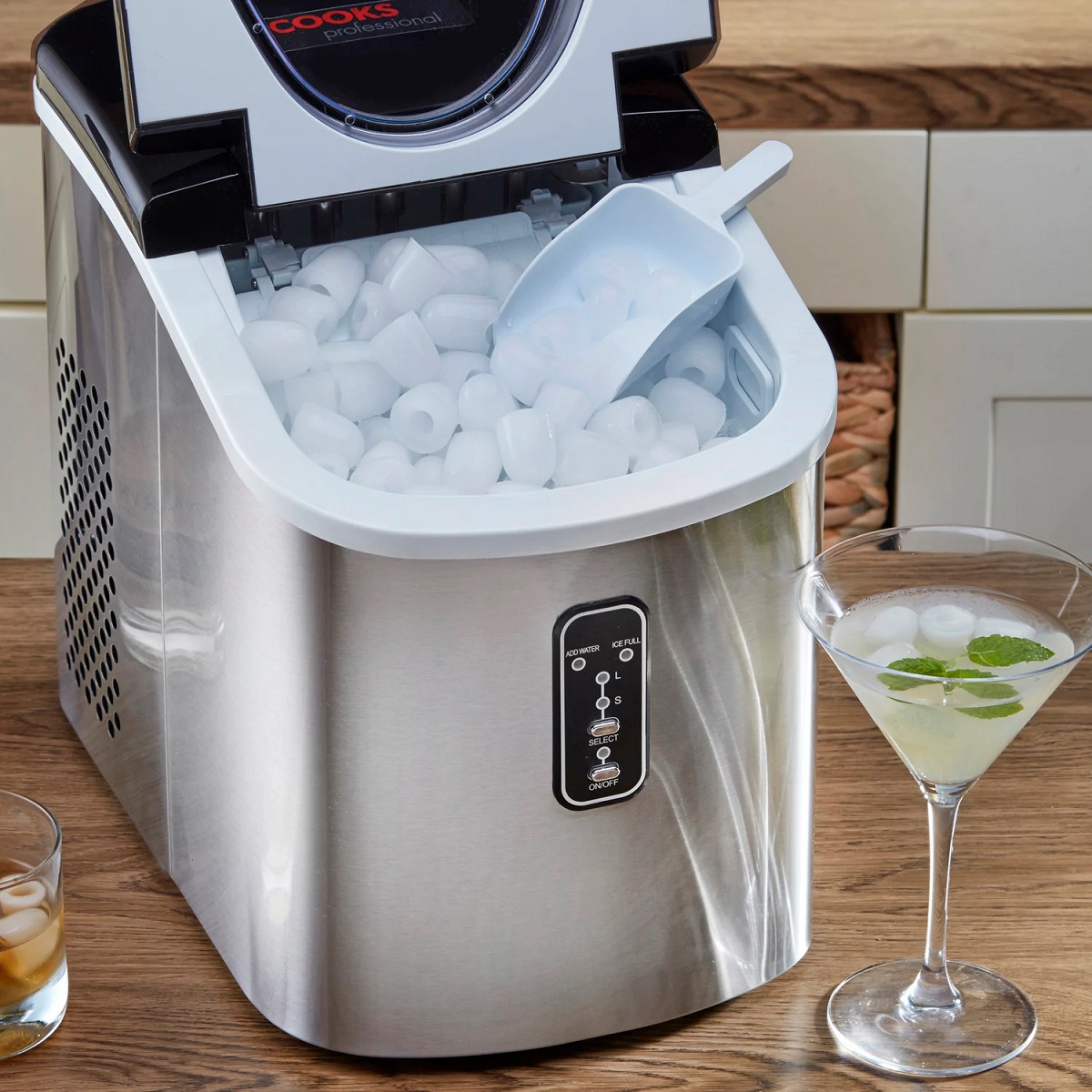
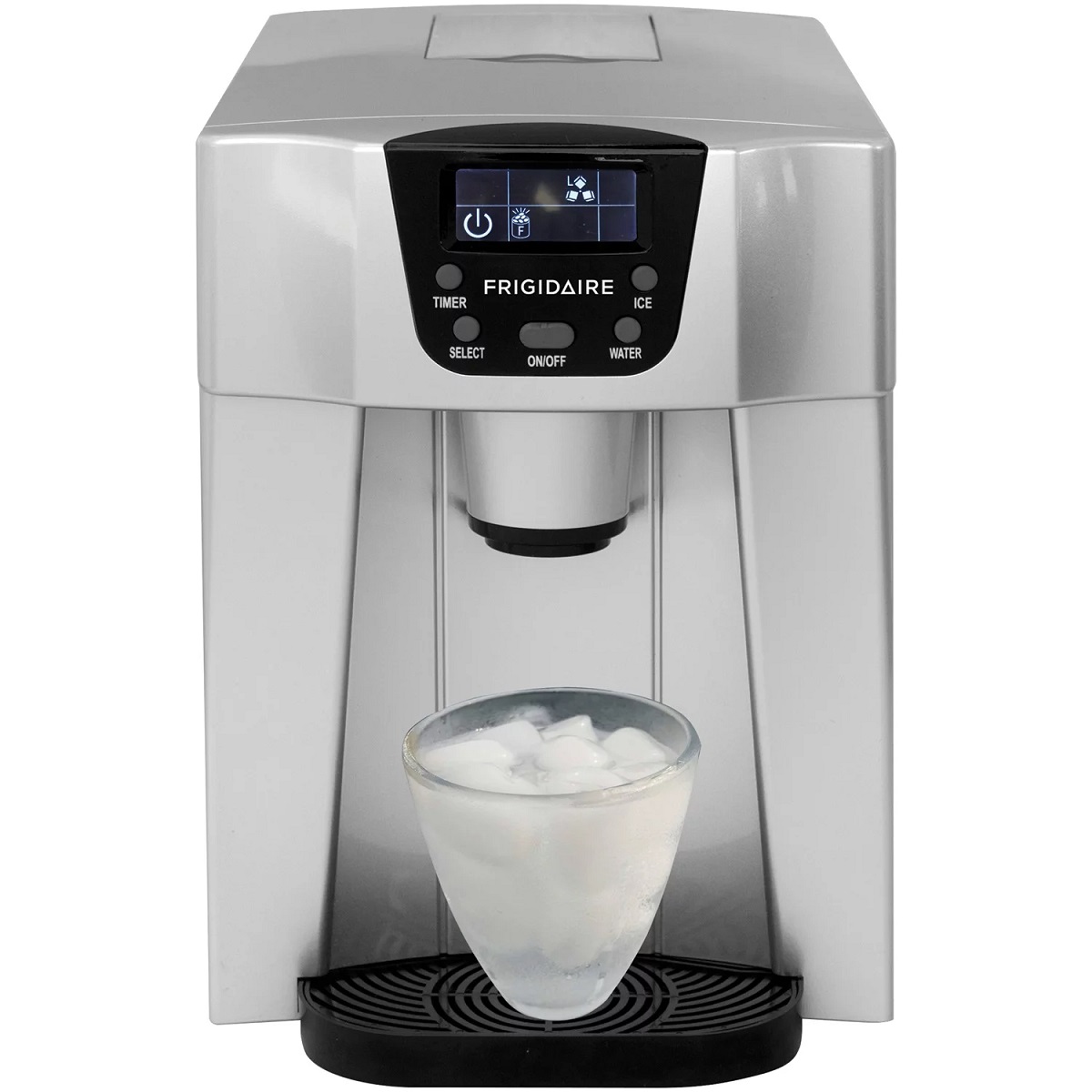
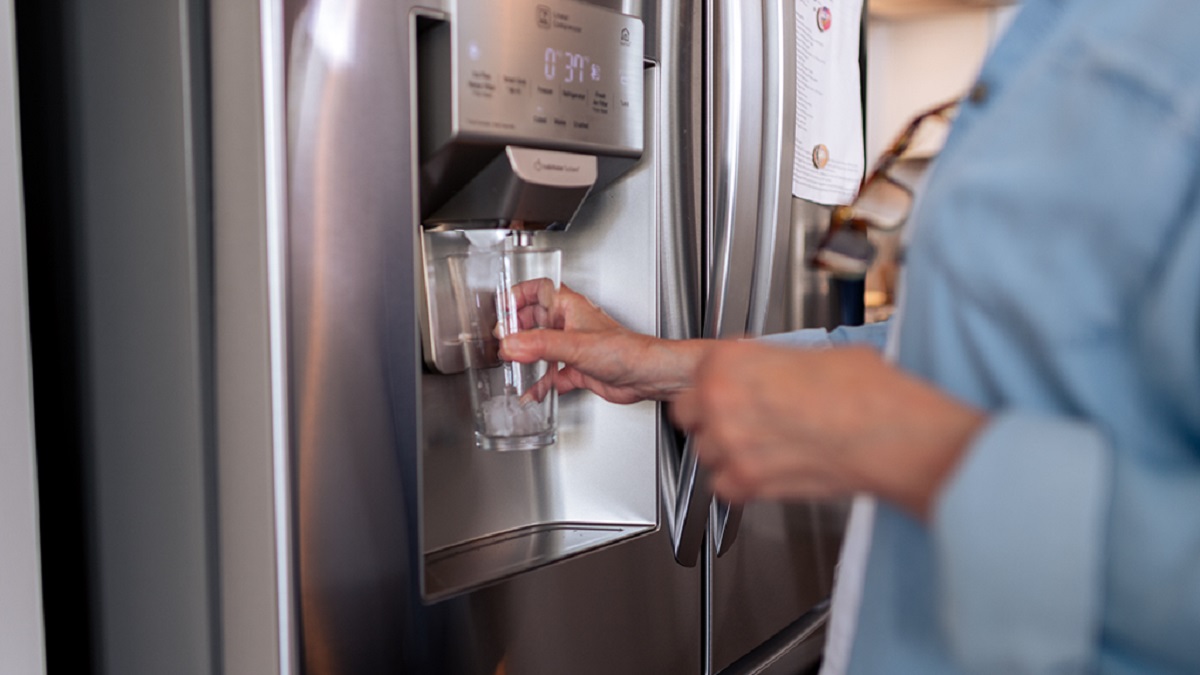
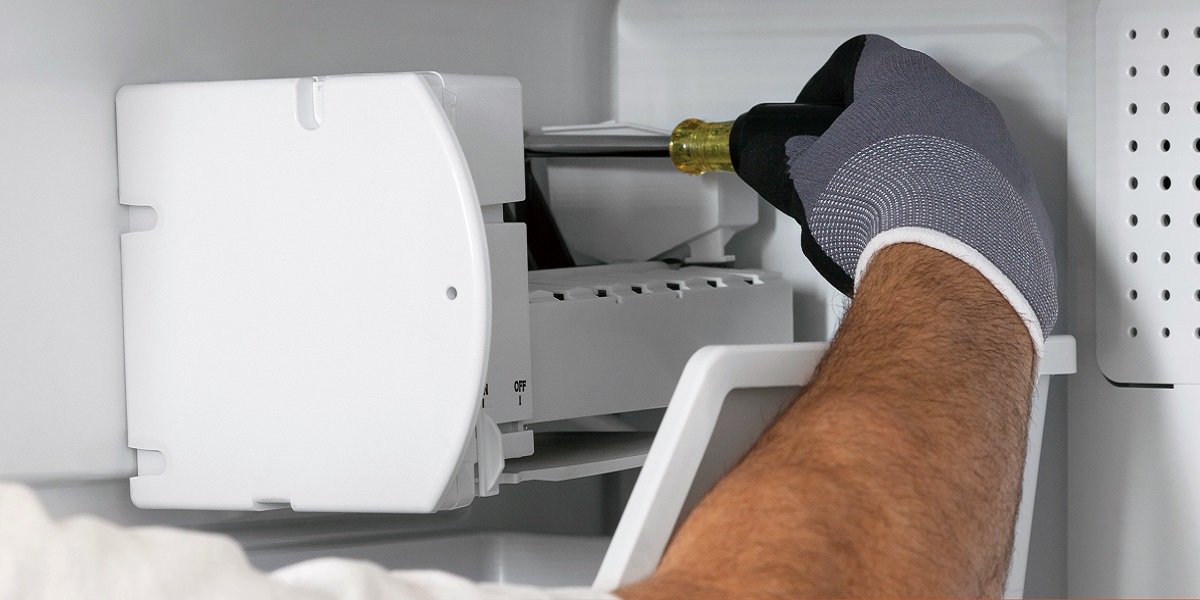
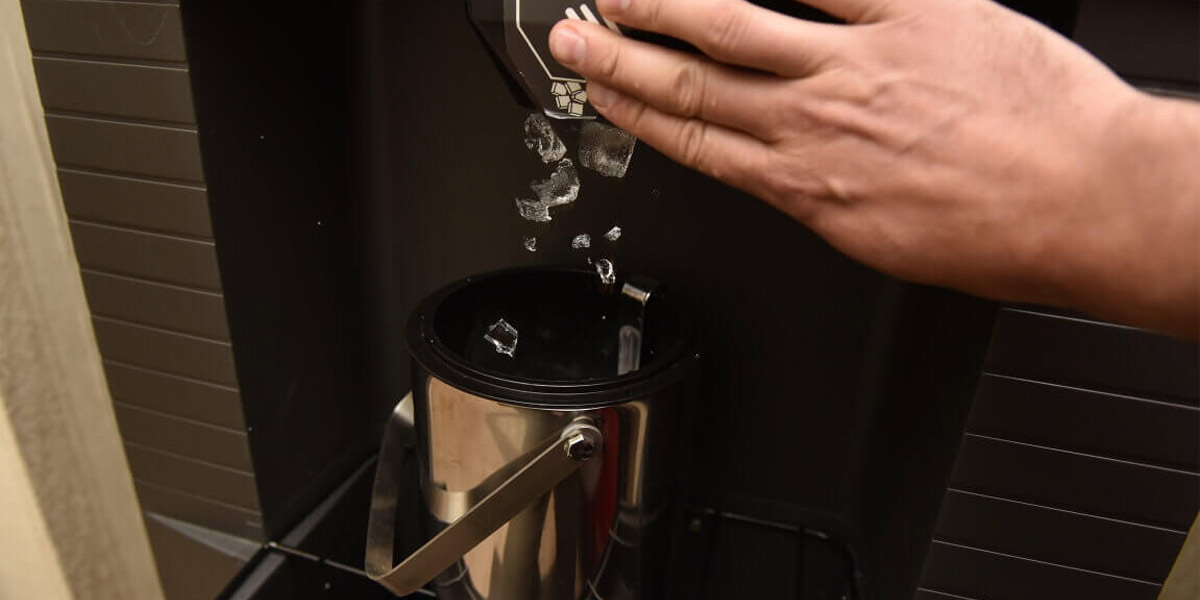
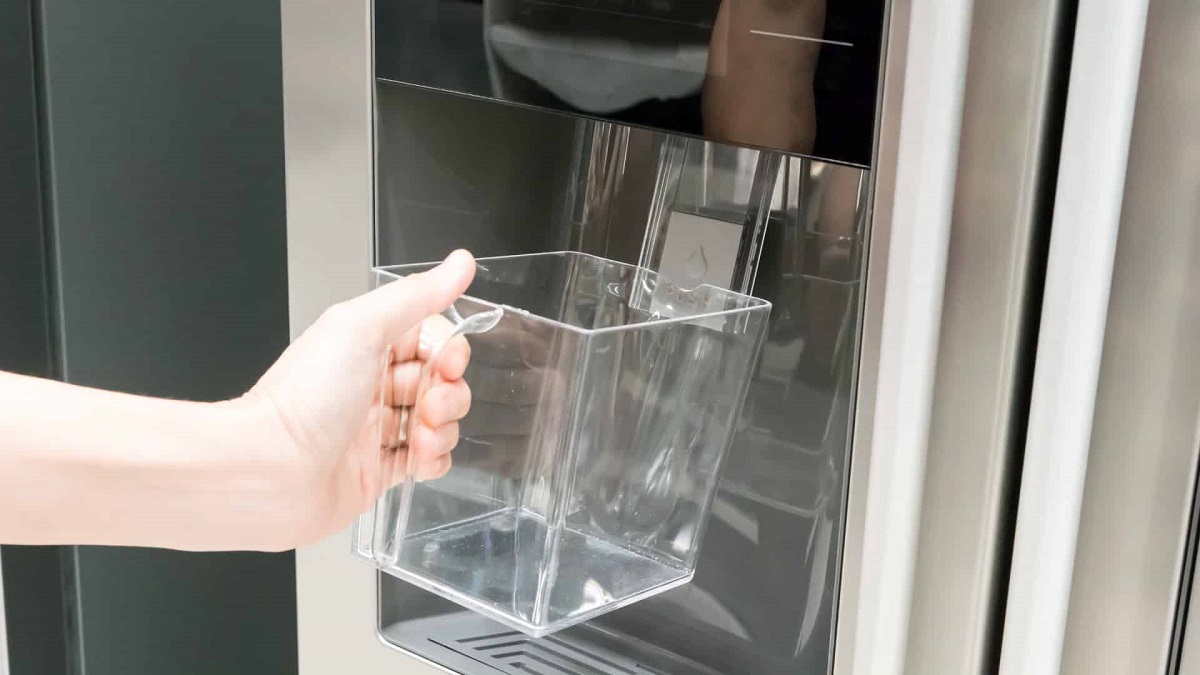
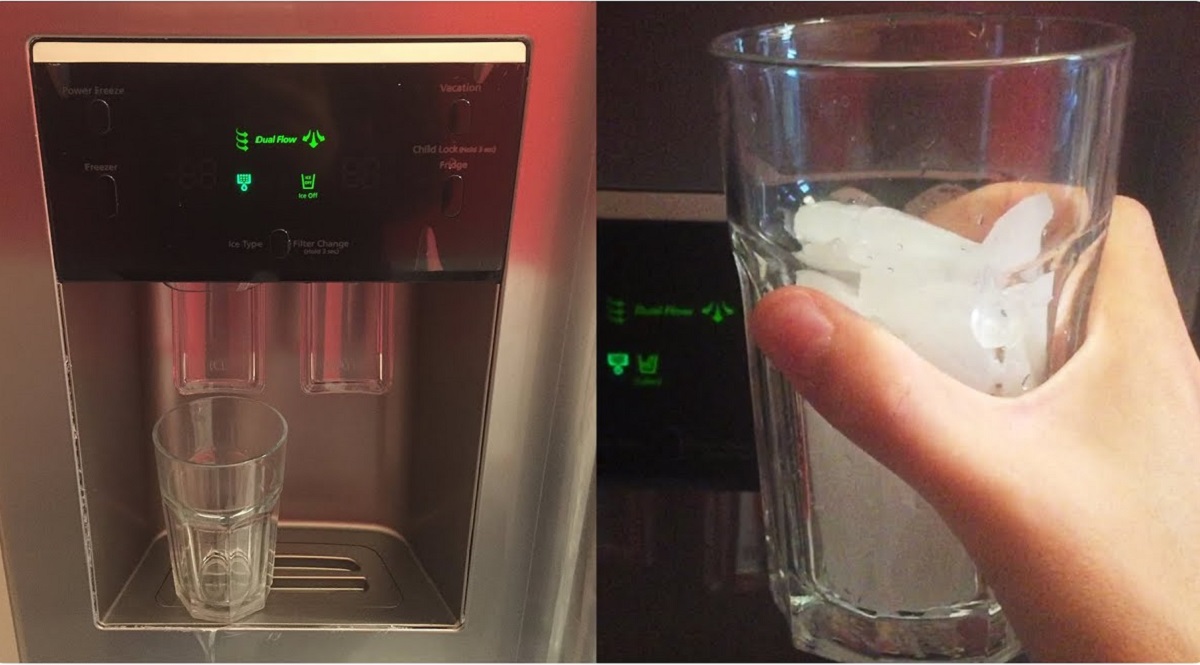
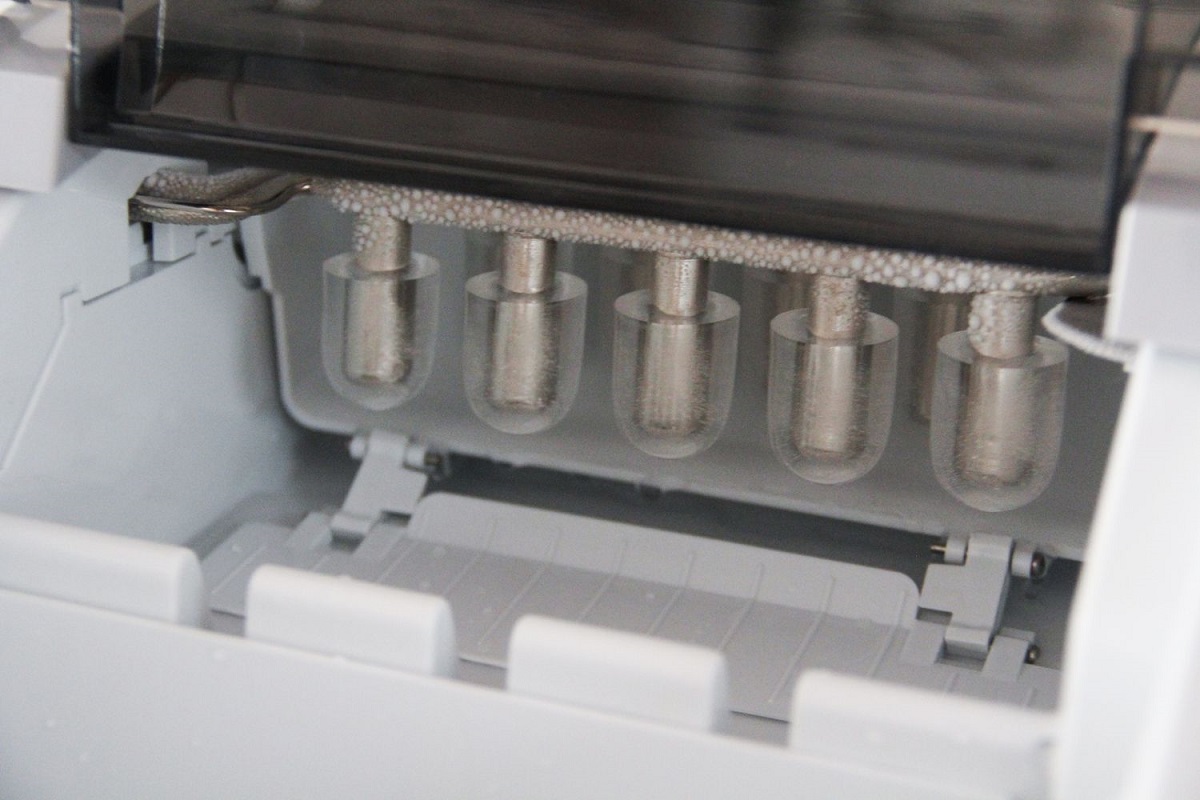
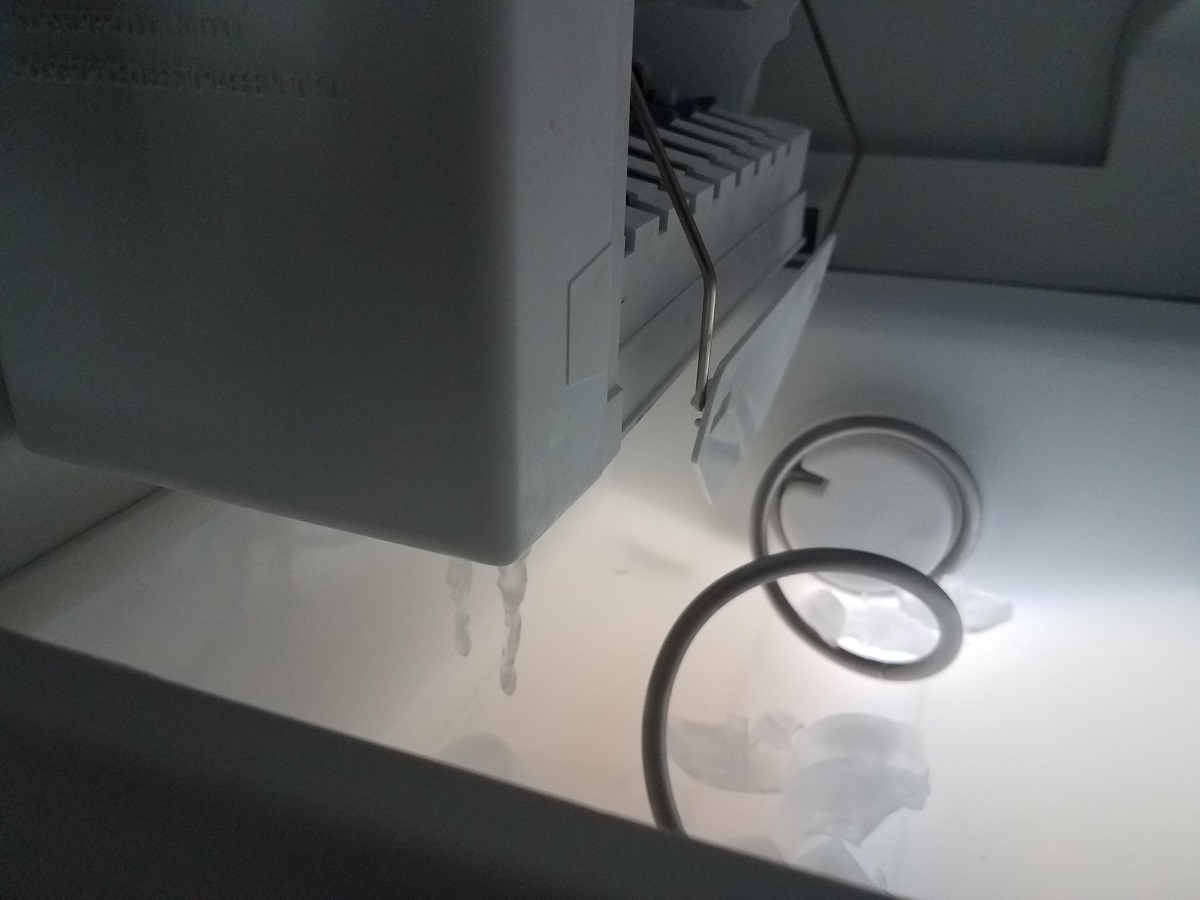
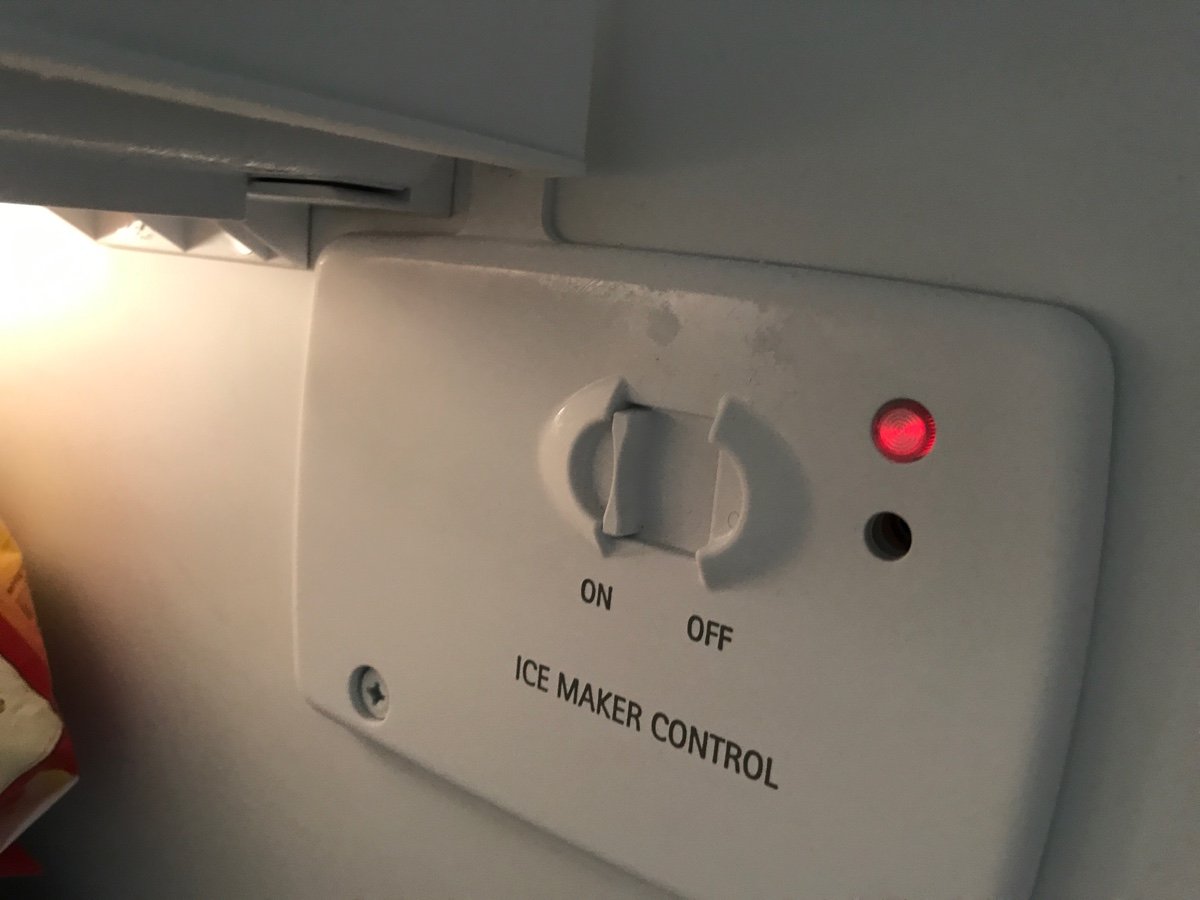

0 thoughts on “Why Is My Ice Maker Making Clumps Of Ice”